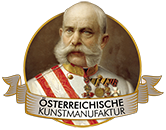

Käthe Kollwitz was confronted with death early in her life. Thus, three of her siblings died. Her whole life she had a conversation with death, her sister once wrote. At the age of 20, Kollwitz arrived in Munich before the turn of the century. Kollwitz had grown up in Königsberg and studied at a drawing school for girls in Berlin. She came to Munich at the request of her father. He was concerned about her artistic career, as she had become engaged to Karl Kollwitz, a medical student. She liked the tranquil Munich. Her fellow students, however, mocked Käthe. For an art student who was at the same time engaged in a middle-class way was not looked upon favorably. In addition to the judgmental looks of the others, Kollwitz also had difficulties in artistic terms. In her opinion, the others were much more talented in painting. Then, when she discovered a brochure about painting and drawing, she realized that she was not really a painter. Now her true talent could unfold. Through drawing, Kollwitz was able to emphasize the essential in people like hardly anyone else. Thus she was able to develop stylus art, the work with charcoal, pen and pencil, to the highest level of mastery. She was able, through the interpretation of her time, to discover a reality that remains hidden from most artists.
Kollwitz often accompanied her husband to his patients and learned about the hardship in the poor quarters of Berlin. In a sense, she felt beauty in the suffering and gloom of proletarian life. From her encounters with the workers, Kollwitz felt a sense of obligation to serve the workers with her art. Even though many contemporaries did not recognize a sense of purpose in art, her highest ideal was to make an impact with her art.
Kollwitz, however, never wanted to be seen merely as a performer of the proletariat. She recognized early that people have to suffer not only from their class-related circumstances, but also from the inescapable laws of life, under separation and death. The year 1914 and the associated outbreak of the First World War once again underpinned her view of the suffering of life. Käthe Kollwitz had two sons when the war broke out, Hans and Peter. Peter was 18 years old when the war broke out and he volunteered for the front. Only 18 days after Käthe Kollwitz took her son to the train station, he was killed in action. Käthe Kollwitz could not get over the death of her son.
Käthe Kollwitz was confronted with death early in her life. Thus, three of her siblings died. Her whole life she had a conversation with death, her sister once wrote. At the age of 20, Kollwitz arrived in Munich before the turn of the century. Kollwitz had grown up in Königsberg and studied at a drawing school for girls in Berlin. She came to Munich at the request of her father. He was concerned about her artistic career, as she had become engaged to Karl Kollwitz, a medical student. She liked the tranquil Munich. Her fellow students, however, mocked Käthe. For an art student who was at the same time engaged in a middle-class way was not looked upon favorably. In addition to the judgmental looks of the others, Kollwitz also had difficulties in artistic terms. In her opinion, the others were much more talented in painting. Then, when she discovered a brochure about painting and drawing, she realized that she was not really a painter. Now her true talent could unfold. Through drawing, Kollwitz was able to emphasize the essential in people like hardly anyone else. Thus she was able to develop stylus art, the work with charcoal, pen and pencil, to the highest level of mastery. She was able, through the interpretation of her time, to discover a reality that remains hidden from most artists.
Kollwitz often accompanied her husband to his patients and learned about the hardship in the poor quarters of Berlin. In a sense, she felt beauty in the suffering and gloom of proletarian life. From her encounters with the workers, Kollwitz felt a sense of obligation to serve the workers with her art. Even though many contemporaries did not recognize a sense of purpose in art, her highest ideal was to make an impact with her art.
Kollwitz, however, never wanted to be seen merely as a performer of the proletariat. She recognized early that people have to suffer not only from their class-related circumstances, but also from the inescapable laws of life, under separation and death. The year 1914 and the associated outbreak of the First World War once again underpinned her view of the suffering of life. Käthe Kollwitz had two sons when the war broke out, Hans and Peter. Peter was 18 years old when the war broke out and he volunteered for the front. Only 18 days after Käthe Kollwitz took her son to the train station, he was killed in action. Käthe Kollwitz could not get over the death of her son.
Page 1 / 3








